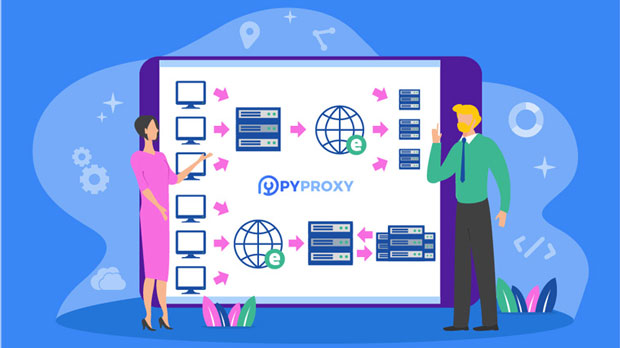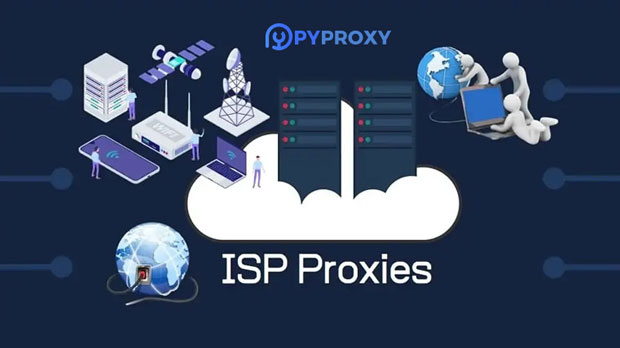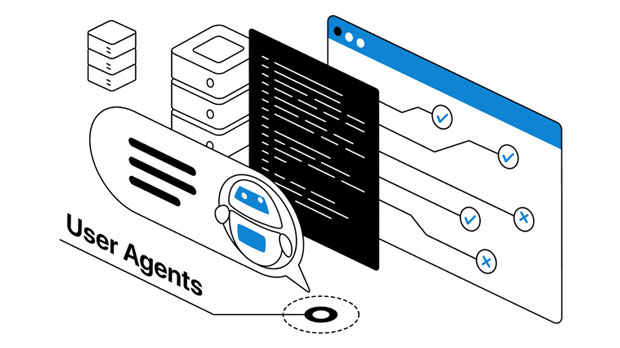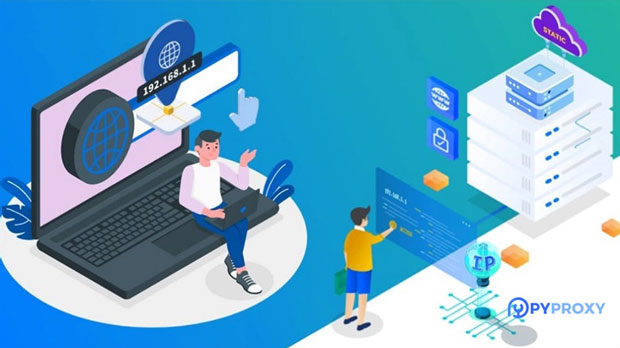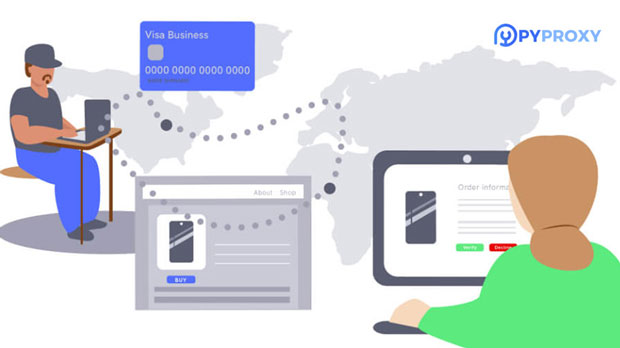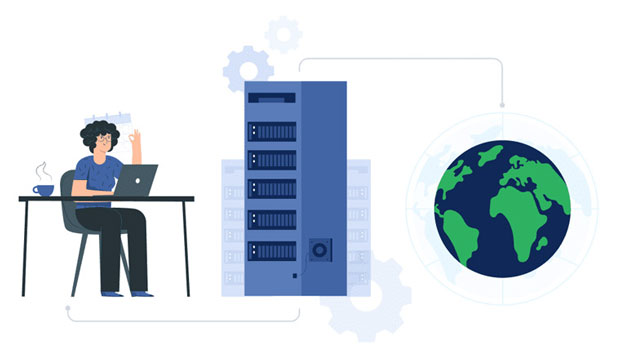Can US proxy IPs be used for YouTube channel management?
In the ever-evolving landscape of YouTube, many content creators, marketers, and channel managers face the challenge of maintaining privacy, overcoming geo-restrictions, and managing multiple accounts. One common strategy employed to achieve these objectives is the use of proxy ips. Specifically, U.S. proxy ips have become a tool of choice for YouTube channel management. But can they truly be effective for these tasks? This article delves into how U.S. proxy IPs can assist in managing YouTube channels, exploring their benefits, potential risks, and best practices. The Role of Proxy IPs in YouTube Channel ManagementA proxy server is essentially an intermediary between a user and the internet, allowing users to mask their real IP addresses. This is particularly valuable for tasks such as content management, viewing restrictions, and maintaining anonymity. When it comes to managing YouTube channels, proxies—specifically U.S. proxies—serve as a powerful tool for overcoming location-based restrictions and enhancing privacy. YouTube, as a global platform, can impose geographical limits on certain content or services. For example, some videos may not be accessible in certain regions. By using U.S. proxy IPs, users can make it appear as though they are accessing the platform from within the United States, thus bypassing such restrictions and ensuring seamless access to YouTube’s full features.Key Benefits of Using U.S. Proxy IPs for YouTube Channel Management1. Bypassing Geo-restrictions and Accessing U.S.-Exclusive ContentMany YouTube videos and features are region-specific, meaning that viewers in certain countries may be unable to access content that is available in the United States. For YouTube channel managers who want to analyze trends, view comments, or engage with specific content in the U.S., U.S. proxy IPs allow them to bypass such restrictions. This access is crucial for staying up-to-date with popular trends, gathering insights, and interacting with a U.S.-based audience.2. Multi-Account Management and IP RotationFor content creators who manage several YouTube accounts, a key challenge is the platform’s policy regarding multiple account logins from a single IP address. If multiple accounts are accessed from the same IP, it can lead to flagged activity, account suspension, or even channel termination. Using U.S. proxy IPs enables users to manage multiple accounts from different IP addresses, minimizing the risk of triggering YouTube’s anti-spam systems. Proxy rotation ensures that each account is linked to a unique IP, improving security and stability in multi-account management.3. Enhanced Privacy and AnonymityYouTube accounts can be sensitive, especially when managing multiple channels or conducting market research. U.S. proxy IPs help maintain privacy by masking the user’s real IP address, preventing tracking by third-party advertisers or unwanted surveillance. This anonymity can be particularly beneficial for creators who wish to operate in a secure environment, protecting their personal data and the identity of their brand.4. Improving Data Scraping and AnalyticsMany YouTube channel managers and marketers rely on scraping tools to gather data about video performance, audience demographics, and competitor strategies. With U.S. proxy IPs, users can access valuable data without the risk of being blocked or restricted by YouTube for over-usage. The ability to collect analytics from different locations further enhances the depth of research, offering better insights into audience behavior and trends.Potential Risks and Considerations When Using U.S. Proxy IPsWhile U.S. proxy IPs offer many advantages, there are certain risks and challenges associated with their use. 1. Compliance with YouTube’s Terms of ServiceOne of the most significant risks associated with using proxy IPs for YouTube channel management is the potential violation of YouTube’s terms of service. YouTube strictly prohibits activities that involve deceptive practices, such as artificially inflating views or engagement. Therefore, using proxies in a way that violates YouTube’s policies could lead to account suspension or even termination. It’s crucial to ensure that the use of U.S. proxy IPs aligns with YouTube’s terms to avoid any negative consequences.2. Slower Speeds and Connection IssuesAnother potential downside of using U.S. proxy IPs is that they may result in slower connection speeds due to the added layer of the proxy server. This can affect video uploading times, channel management tasks, or even video streaming quality. For YouTube managers who rely on quick updates or high-definition streaming, choosing reliable proxies that offer high-speed connections is essential.3. Potential for IP BlacklistingOveruse or misuse of proxy IPs can lead to the IPs being blacklisted by YouTube. Once an IP address is flagged, it may no longer be effective for accessing the platform, which can significantly disrupt channel management efforts. Regularly rotating IP addresses and ensuring they are not associated with suspicious activity can mitigate this risk.Best Practices for Using U.S. Proxy IPs in YouTube Channel ManagementTo maximize the effectiveness of U.S. proxy IPs while minimizing risks, content creators and channel managers should adhere to several best practices:1. Choose High-Quality, Reliable Proxy ProvidersNot all proxy services are created equal. Opting for high-quality, reputable proxy providers ensures that the IPs are reliable, fast, and unlikely to be blacklisted. It’s important to choose proxies with good security features and consistent performance to maintain the integrity of the YouTube channel.2. Rotate Proxies RegularlyTo prevent YouTube from detecting unusual activity, users should rotate their proxies regularly. This involves changing the IP address at frequent intervals to ensure that each account or action is associated with a different IP. This practice helps to avoid triggering anti-bot systems and keeps the accounts safe from being flagged.3. Adhere to YouTube’s GuidelinesCompliance with YouTube’s terms of service is crucial when using proxies. Proxies should be used for legitimate purposes such as overcoming geo-restrictions, improving privacy, and managing accounts. Any attempts to manipulate YouTube’s algorithms or inflate metrics artificially could lead to severe consequences.4. Monitor Proxy PerformanceIt’s essential to monitor the performance of the proxy IPs being used. If there is a noticeable drop in speed, connectivity, or functionality, it may be time to switch providers or update the IPs. Consistent monitoring ensures that the channel’s management process remains smooth and effective.Conclusion: Is Using U.S. Proxy IPs Worthwhile for YouTube Channel Management?In conclusion, U.S. proxy IPs offer significant advantages for YouTube channel management, including bypassing geo-restrictions, enhancing privacy, and facilitating multi-account management. However, it is important to use these tools responsibly and in compliance with YouTube’s policies. By following best practices such as regular proxy rotation and adhering to YouTube’s terms, users can maximize the benefits of U.S. proxy IPs without running into major risks. With the right approach, U.S. proxies can be a powerful asset in the management of YouTube channels, providing access, security, and flexibility for content creators and managers.
2025-02-05



















































